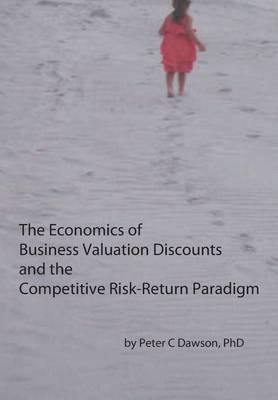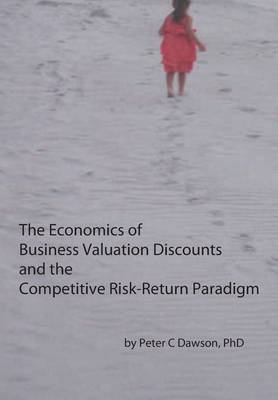
- Retrait gratuit dans votre magasin Club
- 7.000.000 titres dans notre catalogue
- Payer en toute sécurité
- Toujours un magasin près de chez vous
- Retrait gratuit dans votre magasin Club
- 7.000.000 titres dans notre catalogue
- Payer en toute sécurité
- Toujours un magasin près de chez vous
The Economics of Business Valuation Discounts and the Competitive Risk-Return Paradigm
Peter C DawsonDescription
"Appraisers often...overlook or ignore important elements of meaning and nuance...[, i.e., ] the valuation implications of the standard of value known as fair market value" (Mercer and Brown 1999a, p.16). Bonbright (1937), a recognized authority in valuation, acknowledged the "necessity of a fairly precise definition of value" (p.125) and the importance of "distinction, in all its implications, clearly recognized" between concepts of value (p.16) as a necessary "prerequisite to the intelligent discussion of the evidence" or "proof" of value (p.125), noting the imprecise nature of such "question-begging phrases as 'fair market value, ' or 'price at which the property would be sold by a willing seller to a willing buyer'" (p.236). He did not object to the fictitious hypothetical nature of the Fair Market Value Standard (FMVS), but rather to its imprecise definition, inconsistent application, and the characteristic failure to properly distinguish between concepts of value. Appraisal experts and courts recognize that that imprecision and inconsistency often stems from a failure to recognize the logical implications of the FMVS's assumptions (Mercer and Brown 1999a; Fishman and O'Rourke 1998; Fishman, Pratt and Morrison 2007; Bank One Corp. v. Commissioner (120 T.C. 11 (2003)). Subjective valuation adjustments for non-systematic risk are applied because real-world investors are not financially able to diversify well and require a DLOM for non-systematic risk, effectively not recognizing the difference between the Hypothetical Market Construct (within which Hypothetical Investors hypothetically invest) and real-world market (within which real-world investors actually invest). A consistent application of the FMVS's assumptions in appraisal practice defines Hypothetical Investors, by logical implication of those assumptions, as owners of well-diversified asset portfolios who require no form of non-systematic risk valuation discount (Chapter 3). How can one calculate a reliable Fair Market discount for lack of marketability (DLOM) when an explicit, or even a readily-apparent implicit, supply and demand analysis of the Hypothetical Market is not performed? Market value is founded on supply and demand and underlying factors that determine them. Without the guiding valuation structure that Economics' supply and demand framework provides, appraisers have excess leeway to apply inherently arbitrary subjective valuation adjustments, necessarily reducing the reliability of FMV appraisals. Subjective valuation adjustments allow flexibility to account for qualitative valuation factors not captured in the quantitative analysis, yet also create opportunities to advocate for a client's desired value conclusion, that advocacy being the natural result of client pressure for advocacy combined with appraisers' profit incentive to succumb to that pressure (Chapter 10). Advocacy concerns are justified because "Subjective valuation steps are, by definition, not objective"(p. 239) and cannot be made objectively even by well-intentioned appraisers using "informed judgment" based on years of professional experience. The explicit supply and demand analysis in Chapter 13 shows that, contrary to the long-standing practice of applying DLOMs, a small premium for lack of marketability (PLOM), rather than a DLOM, is the Fair Market result. The author's analyses are not, by any measure, mere exercises in abstract theory. That his conclusions are not generally accepted does not undermine their credibility or significance. His assumptions (which are the FMVS's assumptions), economic analyses, and conclusions fully stand on their own merits. Eldridge's (2012) book review concludes "Dawson has provided careful analyses and discussions that challenge professional appraisers' common practice of applying extensive DLOM in valuing minority interests in closely-held businesses" (p.139).
Spécifications
Parties prenantes
- Auteur(s) :
- Editeur:
Contenu
- Nombre de pages :
- 452
- Langue:
- Anglais
Caractéristiques
- EAN:
- 9780984491902
- Date de parution :
- 10-09-10
- Format:
- Livre relié
- Format numérique:
- Genaaid
- Dimensions :
- 152 mm x 229 mm
- Poids :
- 816 g







